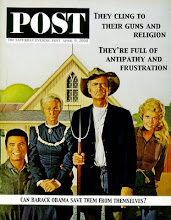
I spent part of the day after Good Friday--Långfredag (Long Friday) for anyone with Scandinavian roots--docking and doctoring honey locust and Osage Orange shoots in the east pasture. The honey locust vastly outnumbered the Osage Orange. That's unfortunate because the honey locust thorns are longer. The thorns play hell on tires. The horses and cattle don't appreciate finding the stalks in their winter rations, either.
There's a tale how the Thunder Spirit was able to detect his son by his ability to painlessly sit on honey locust barbs. How did the boy develop the calluses on his rear end? The answer has been lost in the depths of time.
As I lopped off those thorny problems just above the ground and treated the stumps with Tordon® RTU, I couldn't help but think of the crown of thorns Jesus wore on Long Friday. Then I thought about the origin of the saplings I was whacking. They are descendants of trees planted by the second wave of immigrants, those of European descent, to the Osage Cuestas.
Nineteenth-century policy wonks encouraged tree planting. One had to prove up on a homestead by planting trees and crops, erecting fences and buildings, and remaining on the land for at least five years. The environmental activists of that era latched on to fences of tight-planted Osage Orange trees, which were pruned every year so that they would remain "horse high, bull strong and hog tight". That ended after the event of barbed wire.
Now, those unruly Osage Orange rows bother experts. They're bulldozed, pinched off, sawed down, burned, and blasted. Then the stumps and root systems are killed by government-licensed chemical applicators so more neighborly fences and carefully planned and landscaped subdivisions can emerge.
Even today the government promotes the planting of honey locusts for wind breaks and to slow down erosion. Experts have developed a thornless variety, but we still have plenty of the old-fashioned kind. And wonder of wonders, there's a crazy guy who planted old-fashioned prairie grass on 160 acres south of here. It controls erosion and resists drought better than anything the experts replaced it with, he's told neighbors. It's heartening to count the increased number of quail coveys down there each fall.
Anyhow, if you're the type to be upset about tree killing where God intended few to grow, don't tread on me. If you're seeking passion, I'll point you to a three-foot wide, thorn-clustered, honey locust tree to love.


2 comments:
I could say something about "getting the point" but I won't :-)
Hope you had a wonderful weekend.
Beannachd Dia dhuit.
Brigid
No doubt you've parted a few of those branches while driving some Longhorns. They will rip the hell out of an ATV rider.
Post a Comment